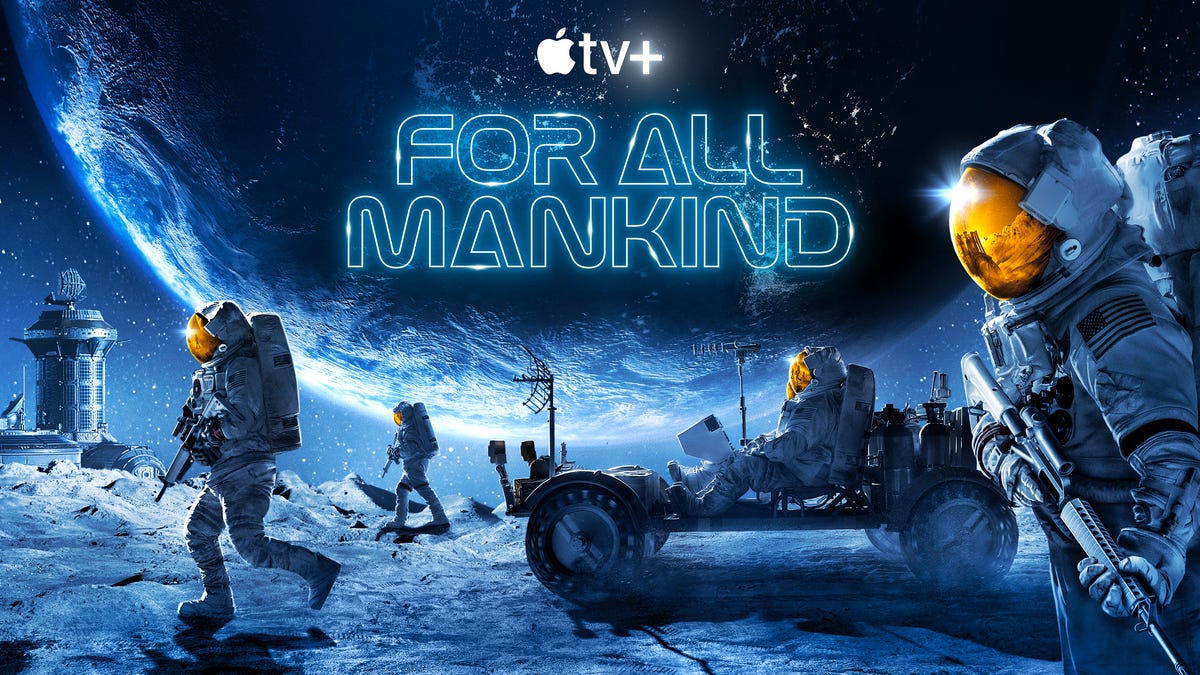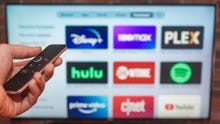

Image: Apple
As the Apple-watching pundit community ramps up their prognostications and pronouncements, and the Apple developer community updates their Xcode installations, all eyes are on the 33rd annual World Wide Developers Conference, to be streamed online between June 6 and June 10, 2022.
Apple is also hosting a watch party at Apple Park where some developers and students can “watch the keynote and State of the Union videos together, along with the online community,” according to the company.
So, what can we expect?
In the headline, I teased that there are four announcements we’re almost 100% positive Apple will be making. Those announcements are for the latest cadence releases of the company’s four named operating systems: iOS, iPadOS, WatchOS, and macOS.
iOS 16: CNET reports the possibility that iOS may contain “big widgets,” as well as FaceTime updates, to make it even more Zoom-like. Bloomberg’s Mark Gurman, via MacRumors, expects to see improvements to notifications and more health tracking features. As always, big questions exist about which phones will be dropped from support and whether we’ll finally see some AR/VR features announced.
iPadOS 16: The biggest feature many Apple watchers hope to see is support for Final Cut Pro on the M1 iPads. After all, both the iPads and most Macs since 2020 support the M1, and Final Cut runs spectacularly on the M1 Macs. But will it happen? Nobody will know until June. Logic Pro and Xcode are also logical choices for iPad implementations. Beyond that, Tom’s Guide reports on some rumors of a home and lock screen redesign with widgets for the lock screen — and even possible floating windows. As with iOS, questions abound about what iPads will get the nod for iPadOS 16, and, once again, there’s that AR/VR question.
WatchOS 9: A big feature we’d like to see is blood pressure measurement, but the rumor mills don’t seem to think that will be a WatchOS 9 feature (although it could be showcased in the Apple Watch 8, expected in September). According to Bloomberg’s Gurman (this time through AppleInsider), we should expect to see improvements in always-on low power mode and improvements in atrial fibrillation detection and tracking. And you can almost undoubtedly expect some new workout modes.
MacOS 13: Given that Apple didn’t shy away from iOS 13, we don’t expect them to avoid the number 13 in the next macOS version. TechRadar thinks the next version of macOS might be called macOS Mammoth, after the Mammoth Lakes in northeastern California’s Sierra Nevada mountains. Personally, I’m hoping for MacOS Milpitas, just because I’ve always felt Milpitas deserves some love. We haven’t seen a lot of specific feature rumors for MacOS 13, but it’s fair to expect continued improvements integrating iOS, iPadOS, and macOS apps, as well as the migration of some additional mobile apps to the Mac, like the Health app.

Image: Apple
For sure: For All Mankind
Season 3 of the AppleTV+ series For All Mankind lands on the last day of WWDC. Since Tim Cook seems to like spotlighting new entertainment offerings during his keynotes, we “for sure” expect that Apple will play a trailer for the new season.
If you haven’t had a chance to check out the first two seasons of For All Mankind, I strongly recommend you do. It’s one heck of a ride. For All Mankind is an alternate history series, working off the premise that Russia landed on the moon before America. And yes, this show started and ran its first seasons well before the current events with Russia and Ukraine.
There’s a definite Mad Men aesthetic in those first few episodes, which start off a bit slow. But as the personalities are defined and the space race picks up, so does the show. Just let yourself chill out through episodes one and two because, by episode three, the show lifts off and doesn’t stop.
Season 1 covers the late 1960s and 1970s in its alternate history. Minor spoiler alert (after all, it’s in the trailers): by the end of the season, there’s an American moon base and some amazing plot twists — some contrived to add tension, but still compelling, and some very credible given the premise.
Season 2 jumps to ten years forward to 1985, where the moon base is a thriving operation. By comparison, in our world, the last flight to the moon was 1972, and we haven’t been back since.
By the time Season 2 ends, holy cow! The last few episodes of Season 2 were true edge-of-seat nail-biters and some of the best contemporary science fiction TV I’ve ever watched.
We know two things about Season 3 from the teaser trailer released this week. First, it will be set starting in 1995. And they’re going to Mars. I wonder if they’ll meet up with Gunny Bobbie Draper.
Bottom line: AppleTV+ is worth the subscription fee if you watch nothing more than For All Mankind. Foundation rocks, also. Sadly, there’s no news yet on Foundation’s Season 2. Maybe that will be announced at WWDC, as well.
WWDC hardware speculation
We just had the big Apple Studio announcement, but that doesn’t mean Apple has covered all its bases with Mac hardware. Here are some of the machines we think might be announced at WWDC. Everything we’ve discussed so far has a high surety probability, but we’re just guessing on these hardware items, so take that into account.
Also:
M2: We’ve just seen the M1 Ultra announced by Apple, but since Apple hasn’t changed the chip designation in two years, and because developers may need to code to new features of a new chip, we have some level of expectation of an M2 announcement. If it is announced, expect a heavy focus on AI, ML, AR, and VR capabilities.
Also: Apple Silicon, Rosetta, M1, M2, SoC: Why these terms matter to every computer buyer
Mac Pro: I’ve talked previously about where I would go with a Mac Pro redesign for Apple Silicon. So far, we haven’t seen an Apple Silicon Mac Pro. Given that a super-powerful machine is an ideal fit for WWDC, there’s a good chance Apple will preview such a machine. If announced, Apple may or may not ship before the end of the year.
Also: Introducing my design for an Apple Silicon-based Mac Pro
Mac mini: I also speculated on how Apple might upgrade the Mac mini to what I’ve called the Mac Mini Pro. The M1 Mac mini hasn’t been rev’d since 2020, and it’s time. Easy speculation is the inclusion of an M1 Pro or Max chip, maybe a higher-end RAM cap, and possibly a few more ports.
Also: Introducing the Mac Mini Pro… again
I don’t expect that we’ll be seeing an iMac Pro or 27-inch iMac because Apple seems to be focusing on the Studio Display in combination with a freestanding chassis. Given the size of the fan in the Mac Studio, it’s unlikely we’ll see an iMac Pro running the M1 Ultra, although I guess it’s possible that the company will ship a Studio Display with an M1 Pro or Max built-in. There’s also some expectation of a new MacBook Air and some other MacBook iterations to fill out the product line.
Personally, I think if we see any new Macs announced, it’ll be a Mac Pro.
Apple Glass
Finally, from the “It’s going to happen someday, so it might as well be now” department, there’s some expectation that Apple will announce an AR/VR headset, dubbed Apple Glass.
Also: Reality shock: The #FakeWorld future of ubiquitous AR
This is not pure speculation. We know Apple has invested heavily in AR and has been including AR features in iOS and iPadOS, going back as far as 2017. As much as peering through an iPad screen is hardly a natural way to do AR, it makes sense that Apple would be working its way towards some sort of augmented viewing device.
TheStreet reports that both Wedbush’s Dan Ives and Morgan Stanley expect some sort of Apple AR device in 2022. This ties into the whole metaverse theme we’ve been covering in ZDNet. While the idea of a bunch of avatars standing around in a virtual pub seems somewhat ridiculous (and deeply unfun), both Sony and Lego’s parent company invested $1B each in Epic Games to develop a metaverse environment.
When companies like Apple spend years adding AR capabilities to their devices, and companies as lucid as Sony and Lego bet their billions, you have to assume something big is coming.
Or, hey, it could be another Google Glass-like device. Because the world definitely needs more Glassholes.
What do you think? Will Apple introduce a new Mac Pro? Will the company spawn a new generation of Glassholes? Do you think Apple’s experience creating reality distortion fields since the 1980s prepared the company to provide AR gadgets to the world? Did you watch For All Mankind? Are you as excited about Season 3 as I am? For all these questions and more, there’s the comments section below. You know what to do.
You can follow my day-to-day project updates on social media. Be sure to follow me on Twitter at @DavidGewirtz, on Facebook at Facebook.com/DavidGewirtz, on Instagram at Instagram.com/DavidGewirtz, and on YouTube at YouTube.com/DavidGewirtzTV.


